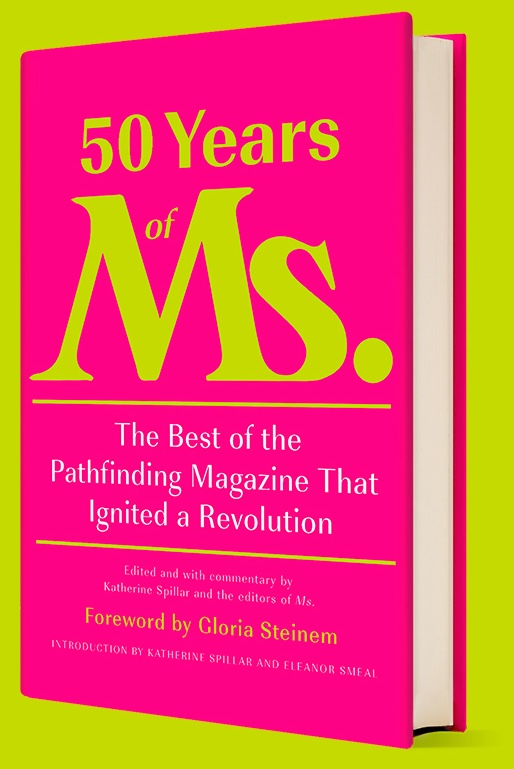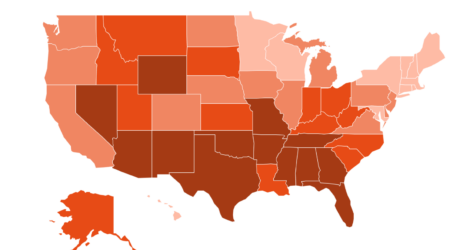In 1962, Rachel Carson’s attack on the dominant scientific standards of the day and on the chemical industry captured the attention of the world.


To pay tribute to five decades of reporting, rebelling and truth-telling, From the Vault includes some of our favorite feminist classics from the last 50 years of Ms. For more iconic, ground-breaking stories like this, order 50 YEARS OF Ms.: THE BEST OF THE PATHFINDING MAGAZINE THAT IGNITED A REVOLUTION (Alfred A. Knopf)—a stunning collection of the most audacious, norm-breaking coverage Ms. has published.
From the December 2002/January 2003 issue of Ms. magazine:
On Sept. 27, 1962, Rachel Carson published Silent Spring and founded the modern environmental movement. Seldom does a book generate such controversy, produce such profound and numerous public policy results, or bring about so much new activity in a social movement.
But Silent Spring was no ordinary book. Its message resonated with a public increasingly concerned with the environment and its effect on human health. It also caught the attention of leading political figures who were not afraid to confront corporate America.
Following World War II, the United Stated embarked on a love affair with chemicals. We celebrated the many applications of plastics and synthetic compounds and wondered how agriculture could have thrived without pesticides. Industry images showed picnicking children being sprayed with DDT. Business had a lot to celebrate and more to champion, as wartime technologies were converted to domestic applications, requiring significant government financial and political support.
Silent Spring begins with the parable of a mythical town that awakens one spring to silence, its birds, insects and other wildlife felled by the damage of chemical pollution. When the New Yorker first published excerpts from it in the summer of 1962, just before the book’s release, no one was prepared for the response. Carson had converted years of painstaking research on the biological effects of widespread spraying of insecticides, pesticides and herbicides into a clarion call for control. Her attack on the dominant scientific standards of the day and on the chemical industry captured the attention of the world.
If we are living so intimately with chemicals, we had better know something about their power.
Rachel Carson
Silent Spring led to significant environmental regulations in the United States. It precipitated congressional investigations, presidential directives, 1972 legislation banning DDT, new regulations for clean air and water, and the formation of the Environmental Protection Agency (EPA) in 1970.
Carson’s work was so catalytic because it linked conservation of nature to human health and tapped into the public’s distrust of political and corporate power, calling for greater accountability. It also engaged women as a new constituency for the environment. After the book’s publication, women all over the country wrote letters to editors, voicing concern about environmental issues as caried as fluorides and nuclear fallout. A new environmentally minded public opened the door for wider mobilization.
This growing constituency for environmental-health issues led Interior Secretary Morris Udall and President John F. Kennedy to form a commission to study chemical applications. This gave credibility to the book, against denunciations from within government agencies, paving the way for wide regulatory reforms.
When Carson published Silent Spring at 55, she was dying from breast cancer. Her book alerted the world to the dangers of the toxic chemicals that may have caused her disease.
As Carson battled both cancer and the radiation treatments that were poisoning her body, she steeled herself for the onslaught that would follow publication of her book. Chemical trade associations and individual companies attacked her with a barrage of criticisms, laden with sexist imagery and language. Led by chemical manufacturers Monsanto, American Cyanamid, and Veliscol, corporate scientists tried to discredit the validity of her research, the “emotionalism” of her interpretations, and the book’s suggested remedies, which the industry viewed as threatening to its business. To discredit Carson and her work, the pesticide industry spent more than $250,000, equivalent to well over a million dollars today. Monsanto, one of the largest producers of DDT, immediately denounced Carson, saying she wrote not “as a scientist but rather a fanatic defender of the cult of the balance of nature.” She was called hysterical. Her concern for the environment was questioned because she was a “spinster” who had no children to be worried about.
Carson’s spirit didn’t falter. She met with members of the special panel of the President’s Science Advisory Committee and testified before Congress. She reacted to the government’s release of its own report on pesticides by testifying before Congress about the need for a government agency to monitor pesticides and other toxic chemicals. Then, she returned home to Maryland for her final months—the cancer had spread through her body. Carson died on April 14, 1964, at 56, never knowing to what extent her work would be vindicated or glimpsing its long-term impact.
As Carson battled both cancer and the radiation treatments that were poisoning her body, she steeled herself for the onslaught that would follow publication of her book.
Carson’s Legacy
“It is the public that is being asked to assume the risks that insect controllers calculate,” Carson wrote. “The public must decide whether it wishes to continue on the present road, and it can do so only when in full possession of the facts.”
Simultaneously calling for a public’s “right to know” and the principle that precaution must precede profit, Carson’s prescriptions are at the core of today’s environmental advocacy and of the women’s environmental movement.
After the publication of Silent Spring and drawing upon the 1960’s wide public distrust of government and corporate power, the environmental movement expanded its ranks. New local and national environmental organizations were formed throughout the United States and Europe, as peace and environmental activists began to mobilize against the international chemical companies and the nuclear industry. The links between environmentalism, peace, consumption, and international policy were firmly established.
By the 1970s, tough and courageous women around the country were alerting their communities to the health effects of toxic waste sites and industrial production facilities, driven by the certainty that their children were in danger whether or not regulations were in place. These facilities were typically in communities with little political or economic power and large numbers of racial minorities. Think of Lois Gibbs, the “housewife” with small children at the Love Canal dump site in New York; the women of “cancer alley,” an 80-mile toxic corridor of industrial pollution through some of the poorest and mostly African-American areas along the Mississippi River, and the women of Long Island, NY, who focused attention on the apparent epidemic of breast cancer in their communities.
The nascent women’s environmental-health movement is not only a domestic one. By the 1990s, women around the world were working together to influence government policies, recognizing that environmental problems know no national boundaries. Today this community-based organizing is Rachel Carson’s legacy. Our activism works toward her kind of Spring.
Up next:
U.S. democracy is at a dangerous inflection point—from the demise of abortion rights, to a lack of pay equity and parental leave, to skyrocketing maternal mortality, and attacks on trans health. Left unchecked, these crises will lead to wider gaps in political participation and representation. For 50 years, Ms. has been forging feminist journalism—reporting, rebelling and truth-telling from the front-lines, championing the Equal Rights Amendment, and centering the stories of those most impacted. With all that’s at stake for equality, we are redoubling our commitment for the next 50 years. In turn, we need your help, Support Ms. today with a donation—any amount that is meaningful to you. For as little as $5 each month, you’ll receive the print magazine along with our e-newsletters, action alerts, and invitations to Ms. Studios events and podcasts. We are grateful for your loyalty and ferocity.





